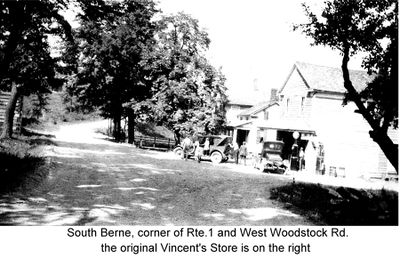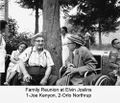Difference between revisions of "South Berne"
| Line 70: | Line 70: | ||
Image:falls.jpg|<center>At the falls in South Berne, Addie Carl and her niece, Catherine and Margaret Vincent in the water</center> | Image:falls.jpg|<center>At the falls in South Berne, Addie Carl and her niece, Catherine and Margaret Vincent in the water</center> | ||
Image:garage.JPG|<center>The garage, once a blacksmith shop and the old Methodist church hall and shed across from the church.</center> | Image:garage.JPG|<center>The garage, once a blacksmith shop and the old Methodist church hall and shed across from the church.</center> | ||
| + | Image:S 1.jpg|<center>Post Card 1</center> | ||
| + | Image:S 1a.jpg|<center>Back of Post 1 Card</center> | ||
| + | Image:{file name}|<center>{caption}</center> | ||
| + | Image:{file name}|<center>{caption}</center> | ||
Image:{file name}|<center>{caption}</center> | Image:{file name}|<center>{caption}</center> | ||
Image:{file name}|<center>{caption}</center> | Image:{file name}|<center>{caption}</center> | ||
Image:{file name}|<center>{caption}</center> | Image:{file name}|<center>{caption}</center> | ||
Image:{file name}|<center>{caption}</center> | Image:{file name}|<center>{caption}</center> | ||
| − | |||
Revision as of 20:07, 20 January 2016
South
Contents
Location
Berne is a hamlet near the south town line bordering Westerlo.
History
South Berne was called Centerville previous to 1825 and was also locally known as Mud Hollow from the swampy nature of the soil in that vicinity. Early settlers were John F. Snyder, who owned and ran a grocery store, and Daniel Lounsberry who owned a tannery. Another important settler was Ava Culver, who owned and ran a mill.
However, little business remains today in the hamlet of South Berne. The falls and remains of the old mill are worth seeing.
From the History of the County of Albany, 1886:
This village is on the site of the mill property of Asa Culver. It has a population of 60 [in 1886]. Previous to 1825 the place held the name of Centerville from its being equi-distant from three of the larger villages. It is now locally known as Mud Hollow (Mud Hole) from the swampy nature of the soil south of the village.
In 1817 John P. Snyder entered into the grocery business here, and Daniel Lounsberry assumed the occupation of a tanner and currier.
In 1822 Alexander McKinley, a wagon-maker, opened a tavern. He kept a trained bear and moose, and life-sized wax figures of noted criminals, which he exhibited from place to place.
Zebulon Holdridge in 1825 carried on blacksmithing, and Ebenezer Denison a general grocery store and ashery.
In 1896 there were 2 churches, 2 blacksmith shops, a grist-mill, a saw-mill, 2 stores (Henry H. Lawson and James Babcock, respectively), a carding and clothing mill, and a wheelright and paint shop.
Churches
Schools
Historic Businesses
This section will have the history of each business beginning from its establishment, through various ownerships and name changes. Pictures may be used provided you have authority to post them.
Hotels, Inns, Taverns, and Resorts
Families
Sawmills and Feedmills
- Culver Cloth Mill built about 1890 by Asa Culver.
- South Berne Mill grist mill
- Andrew Sweet Mill saw mill
- Carding Mill]] operated in 1830 by Moses Barber and James Parish[1]
- Reynolds Clover Mill[1]
- Onderdonk Cider Press[1]
Industry
Stores
Other Businesses
Photo Gallery
This section is for scenic photos and post cards of the hamlet. Photos of people and families should be posted on biography or family pages.
Sources



















